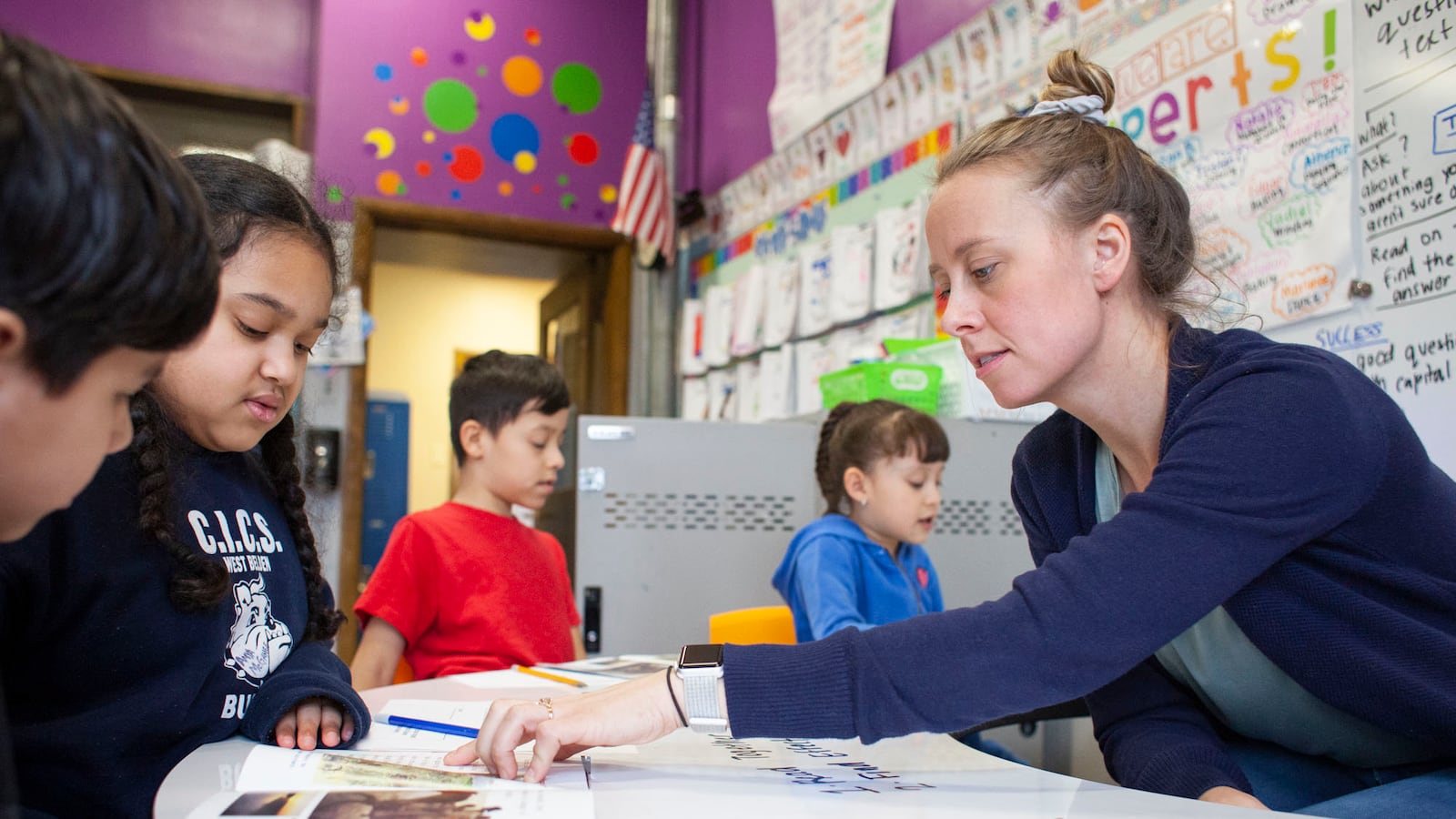Among the many demands on class size, staffing and prep time, one line item in the Chicago teachers proposed contract has escaped much public discussion: a continuation of a moratorium on charter schools.
Passed as a side letter in the tentative agreement during the early days of the strike, the charter moratorium promises no new charter schools and limits charter enrollment over the course of the five-year contract. It essentially continues a moratorium from the Chicago Teachers Union contract of 2016, which broke new ground in Chicago.
While it comes at a time when charter schools are already seeing a freeze from both the state and the city, it shows how the Chicago Teachers Union continues to wield its contract negotiations to impact district policy, particularly on controversial areas like charter school growth.
“It has been important for us to say we need high-quality neighborhood schools, and creating more charters has not helped,” union President Jesse Sharkey said.
The charter moratorium in the tentative agreement says charter student enrollment by the end of the contract will not exceed 101% of charters’ enrollment capacity as of last school year. Furthermore, there will be “net zero increase” in the number of charter schools.
But while they’re unhappy with the continued limit, charter advocates say that it’s unlikely to make a material difference when many of Chicago’s charter schools, like district schools, are focused on retaining students as overall district enrollment shrinks.
Most charter schools are not near their enrollment maximum, and even the most resilient Chicago charters say they are focused on sustaining enrollment. Charters grew in the past decade, although recently at a slower pace. They now serve 15% of Chicago students, up from 9% a decade ago.
The gap between actual charter enrollment and the cap is still large, said Andrew Broy of the Illinois Network of Charter Schools.
“There are about 59,000 charter students enrolled today, but the capacity is 14,000 or 15,000 more than that,” Broy said.
Even with the number of new charter schools capped, Broy said the district must receive charter applications, even if it doesn’t move forward with them. If a charter school closes, another could open in its stead according to the agreement, he said.
But union officials say the charter freeze highlights how their activism and contract demands have shifted broader policy.
In recent months, new charters and those fighting closure have found their paths blocked. Illinois abolished its state charter school commission last spring, closing the door on a route of appeal for charter applicants denied by their school districts. Last school year, the Chicago school board denied three new charter applications, and announced plans to shutter two then-operating charter schools, one of which closed and another that was resuscitated as one of the charter commission’s last actions.
“We believe that CPS commitment to cap charters has been an important part of the reason why charters haven’t been expanding,” Sharkey said.
Limiting charter school growth has been a cornerstone of the union’s policy since the Caucus of Rank and File Educators took leadership of the union in 2010, and has continued even as the union has expanded to unionizing charter school teachers.
As the district closed a record number of schools in 2013, the union pushed a moratorium on new charter schools, which it argued were pulling away students from district-run neighborhood schools, cutting into district finances, and undermining parent voice in schools. (While district-run schools have Local School Councils that give parents decision-making voice in leadership and budget choices, charters do not.)
The 2016-19 union contract placed a moratorium on charter growth, nearly identical to the new agreement.
Charter advocates say they oppose the new side agreement.
“We are extremely disappointed,” Broy said in a statement.
“Despite the many unique school types in the city, including magnet, selective enrollment, and military schools,” he wrote, “charter public schools are the only school type being singled out for this disadvantageous treatment.”

